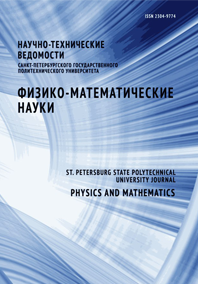Dynamics of branching blood flows at artery-bypass junctions with and without tissue overgrowth: patient-specific CFD simulation
The article presents the results of numerical study of hemodynamics in proximal femoral-popliteal anastomoses of real patients in case of neointimal hyperplasia. Geometric models of anastomoses were based on the clinical data obtained by computer tomography. The neointimal hyperplasia causes changes in the blood flow structure and in stagnant zones after the suture area. Due to the cross-section narrowing, the time-averaged wall shear stresses (TAWSS) in this region increase and the oscillatory shear index (OSI) decreases, and the combined index known as relative residence time (RRT) increases as well. Low values of TAWSS and high values of OSI and RRT are observed in the stagnant zone. High RRT values indicate areas with a high risk of neointimal hyperplasia.


